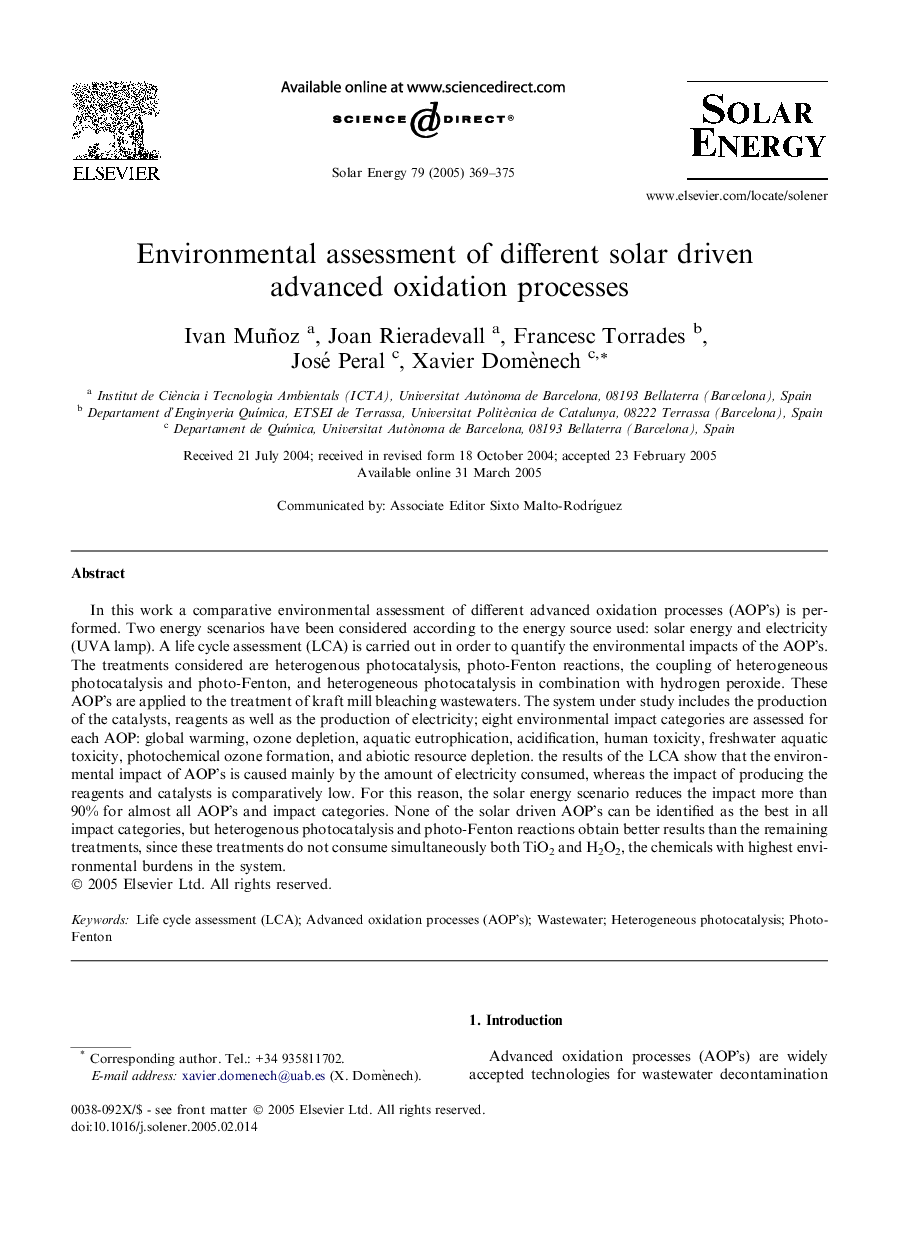| Article ID | Journal | Published Year | Pages | File Type |
|---|---|---|---|---|
| 10643248 | Solar Energy | 2005 | 7 Pages |
Abstract
In this work a comparative environmental assessment of different advanced oxidation processes (AOP's) is performed. Two energy scenarios have been considered according to the energy source used: solar energy and electricity (UVA lamp). A life cycle assessment (LCA) is carried out in order to quantify the environmental impacts of the AOP's. The treatments considered are heterogenous photocatalysis, photo-Fenton reactions, the coupling of heterogeneous photocatalysis and photo-Fenton, and heterogeneous photocatalysis in combination with hydrogen peroxide. These AOP's are applied to the treatment of kraft mill bleaching wastewaters. The system under study includes the production of the catalysts, reagents as well as the production of electricity; eight environmental impact categories are assessed for each AOP: global warming, ozone depletion, aquatic eutrophication, acidification, human toxicity, freshwater aquatic toxicity, photochemical ozone formation, and abiotic resource depletion. the results of the LCA show that the environmental impact of AOP's is caused mainly by the amount of electricity consumed, whereas the impact of producing the reagents and catalysts is comparatively low. For this reason, the solar energy scenario reduces the impact more than 90% for almost all AOP's and impact categories. None of the solar driven AOP's can be identified as the best in all impact categories, but heterogenous photocatalysis and photo-Fenton reactions obtain better results than the remaining treatments, since these treatments do not consume simultaneously both TiO2 and H2O2, the chemicals with highest environmental burdens in the system.
Related Topics
Physical Sciences and Engineering
Energy
Renewable Energy, Sustainability and the Environment
Authors
Ivan Muñoz, Joan Rieradevall, Francesc Torrades, José Peral, Xavier Domènech,
